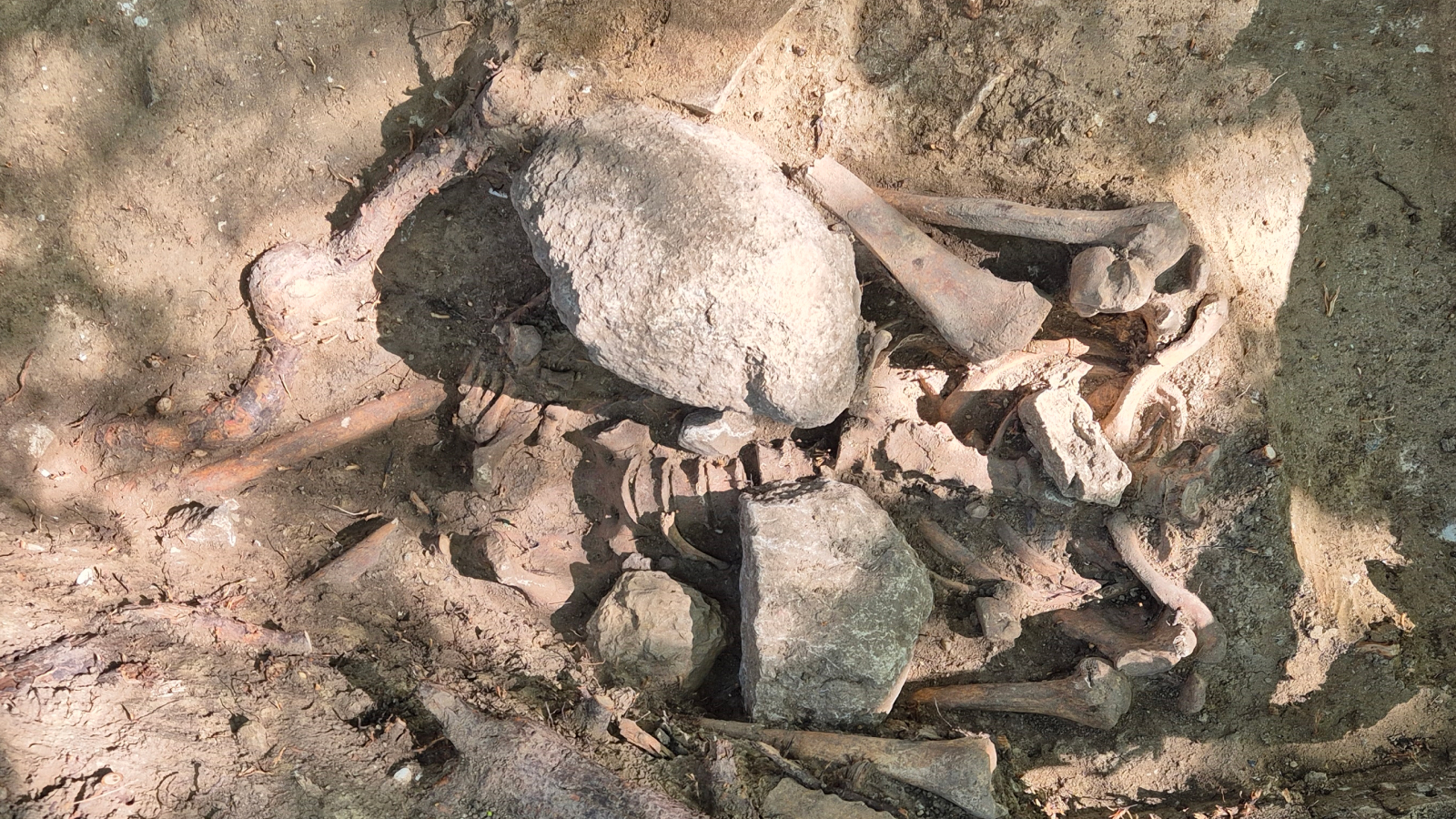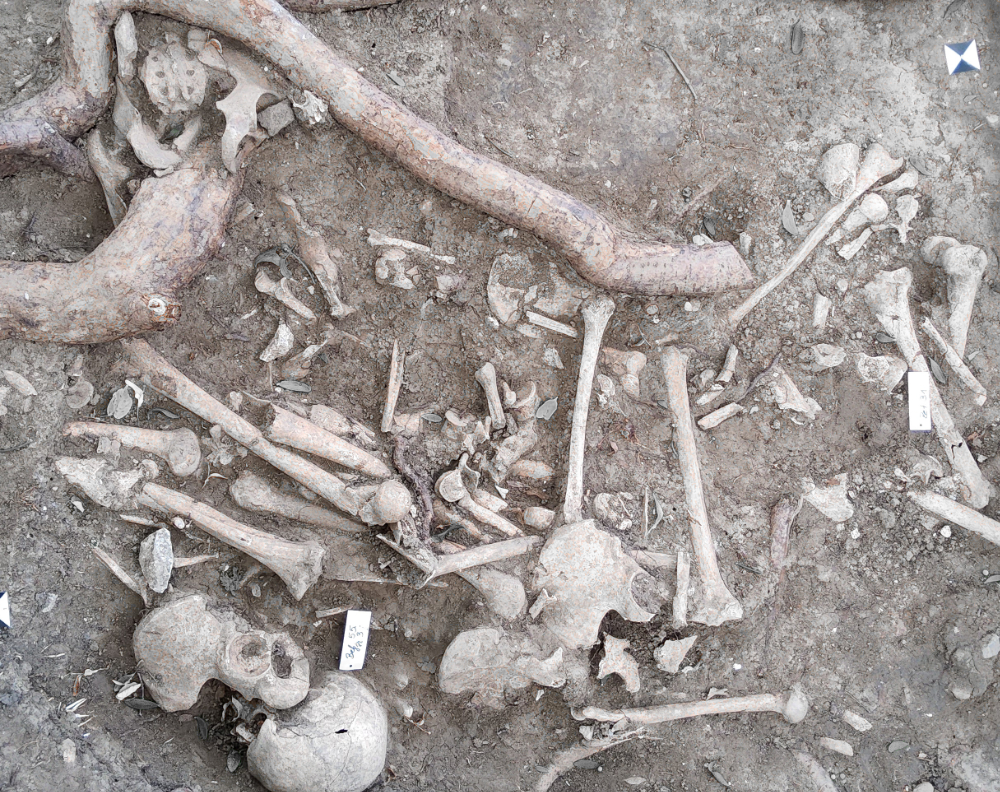
Archaeologists have unearthed the grave of a man weighed down by stones — apparently to prevent him from rising from the dead as a "revenant" — while excavating around a 17th-century gallows in Germany.
The grave, located near the town of Quedlinburg in the state of Saxony-Anhalt, is one of at least 16 discovered at the gallows site, where criminals were executed by hanging from the 1660s until the early 19th century.
Fear of such revenants in Europe rose between the 16th and 18th centuries, Marita Genesis, an archaeologist who is leading the excavations on behalf of state authorities, told Live Science.
"These were people who had possibly died an early death, or a sudden death, without confession or absolution," she said. "It was fear that they might return to the realm of living, [so] various measures were taken to prevent the deceased from doing so."
Related: Fear of reanimated corpses may explain mysterious burials at 1,600-year-old cemetery
Such measures could include spraying incense, placing wooden crosses, binding the limbs of the deceased, or covering them with brushwood, she said. In this case, the man was buried on his back, without a coffin, and large stones were placed on his chest — a measure "obviously intended to prevent him from rising from the grave," Genesis said.
The buried skeleton showed no signs of execution, though hanging and drowning wouldn't have left any visible marks. Further examinations may reveal how the man died, she said.

Gallows hill
The execution site was a "galgenberg" — "gallows hill" in English — where convicted criminals were hanged and often buried so no one had to carry the bodies long distances, Genesis said. The site has at least 16 individual graves and two "bone pits" that held remains disturbed by later burials.
Some of the skeletons show sharp-force injuries that may have been inflicted during torture on "the wheel" or during "quartering," a gruesome form of execution reserved for the worst criminals.
Most of the deceased, including the "revenant," were buried without coffins.
"People were usually buried lovelessly in the ground like animal carcasses, without any sympathy or care," Genesis said. They often lay on their stomachs or on their sides with their hands on top of each other, "which indicates that they were bound," she added.

Strange burial
But one of the burials at Quedlinburg is unusual because the person was interred in a wooden coffin, lying on their back with their hands placed in front of them. The archaeologists suspect this person had killed themselves, which was then seen as a type of murder — so the law required that they be buried at an execution site, Genesis said.
Yet the coffin showed signs of care and compassion during the burial, and three amber beads suggest a Christian rosary was placed with the deceased, she said.
Archaeologists think tens of thousands of such execution sites must have existed in Europe; many have now been destroyed by farming and urban development, but the few that remain are an important source of information for archaeologists.
"Looking into the floor of a place of execution makes it possible to read the legal history of the respective region, as if in a book," Genesis said.







